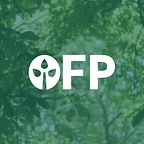Why We Are Building OFP
By Michael Kelly
Co-Founder, Chief Product Officer at OFP
OFP is a project two years in the making. It started as a pet project, borne out of discussions with a professor interested in the potential of tracking reforested trees using blockchain technology. It grew into a larger idea that caught traction after discussions with restoration practitioners revealed the need for improved tree-planting metrics. Today, OFP is being built for a clear market need that has only just started to emerge.
The Open Forest Protocol is a permissionless system for managing the monitoring, reporting, and verification of restoration projects. It straddles two very different worlds that are equally important: the climate movement of nature-based solutions and carbon markets, and the crypto world of smart contracts and distributed ledgers.
On the environmental side, OFP is being built at a time when restoration is becoming a clear pathway to mitigating the worst effects of climate change. In The Business of Planting Trees, the Nature Conservancy explains that restoration is poised to become a commercial opportunity that governments, private enterprises, and non-governmental organizations will all look towards in the future. In fact, they have gone so far to say that “The Business of Planting Trees is going to be one of the biggest climate stories of the next 20 years.” The clear problem is the lack of standardized verification surrounding whether trees are planted, what happens to them after they are planted (their full life cycle), and how much carbon is actually sequestered.
On the crypto side, OFP is developing alongside open-source protocols like Ethereum, Polkadot, and NEAR, which are quickly establishing themselves as creativity hubs for a diverse array of world-changing applications. At last, the technology has matured to a point where scalability and usability make more widespread solutions possible — including climate focused ones.
Of these Layer 1 Protocols, OFP has decided to build on NEAR. Not only because NEAR’s design and emphasis on scalability and usability will make OFP attractive to the environmental world, but also because we believe in the fundamental vision grounding the NEAR Ecosystem: An Open Web, where we — as users — can have control over our money, identity, and data.
The Open Forest Protocol is a natural next step in creating effective climate solutions that are also designed to scale. It is an open and inclusive solution that allows us to address the climate crisis collectively and transparently using a public distributed ledger. Through that lens, OFP is a paradigm shift in how we look at solving one of the most challenging problems of our time.
To join the OFP community, follow us on Twitter, reach out to the Corpsemen on twitter, or send me a message at: m@openreforestation.org
